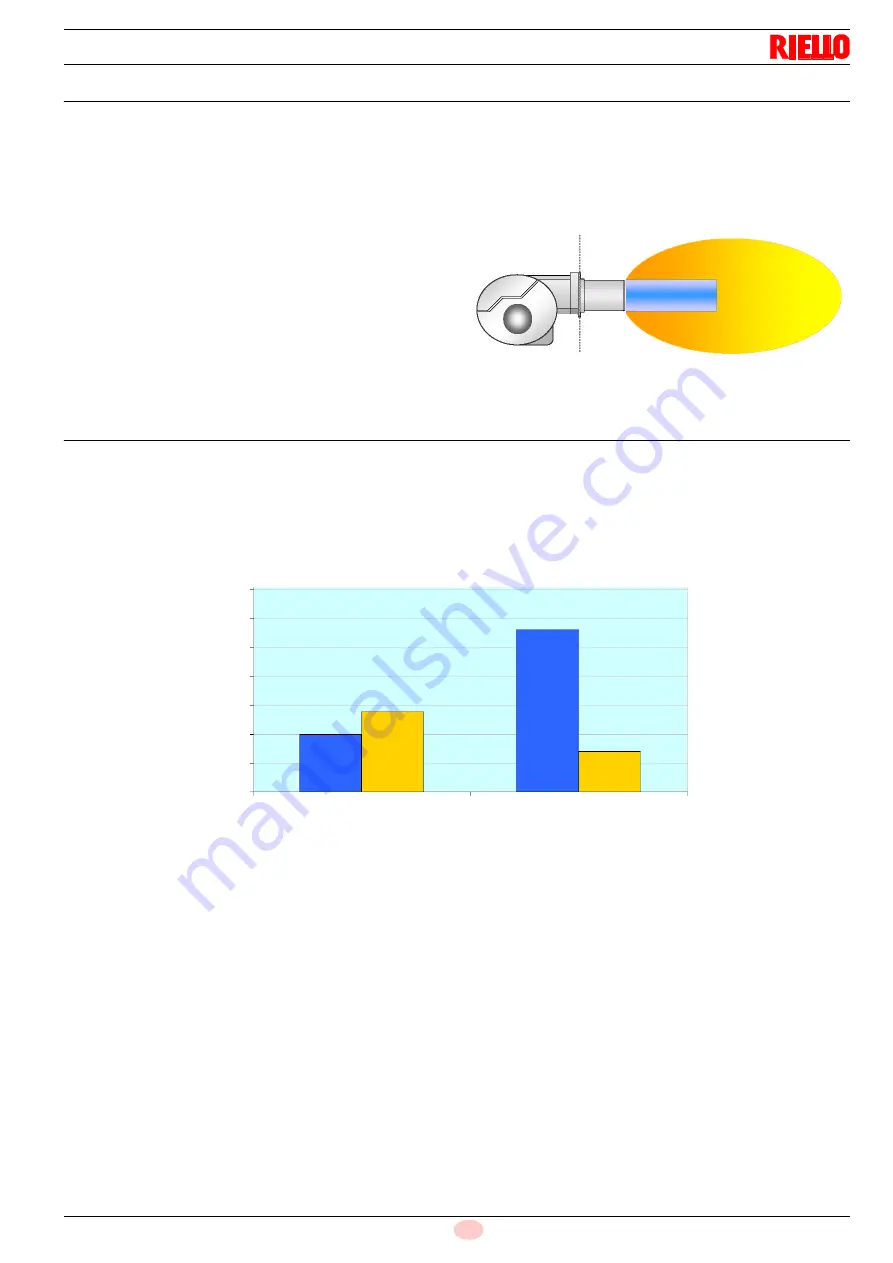
19
20029918
GB
Operation
6.7
Combustion head
The combustion head comprises a highly thermal resistant cylin-
der whose surface features numerous holes, encased in a metal
"mesh" (Fig. 16).
The air-gas mixture is pushed inside the cylinder and out of the
head through the holes in the perimeter.
Combustion starts when the air-gas mixture is ignited by a spark
generated by the electrode.
The metal "mesh" is the combustion head's most essential ele-
ment since it improves burner performance considerably.
The flame developed on the surface of the head is perfectly re-
tained and adheres to the mesh when operating at the maximum
setting. This allows modulating ratios as high as 6:1, avoiding the
danger of flashback when modulating is at its minimum.
The flame features an extremely compact geometry, meaning
that there is no risk of contact between the flame and parts of the
generator, consequently eliminating the possible problem of poor
combustion.
The flame's structure means that smaller combustion chambers
can be developed, designed to exploit this particular feature.
6.8
Emissions
The emission values of the burners are much lower than the limits
laid down by the strictest standards.
The flame's distribution and its spread over a large surface
means that the burner manages to limit the formation of ther-
mal NOx, the main causes of pollutant emission.
Fig. 16
D9714
mg/kWh
NOx
CO
NOx
CO
CLASS 3 LIMIT = 80 mg/kWh
70
60
50
40
30
20
10
0
Fig. 17
Maximum
modulation 35 kW
Minimum
modulation 7 kW



































